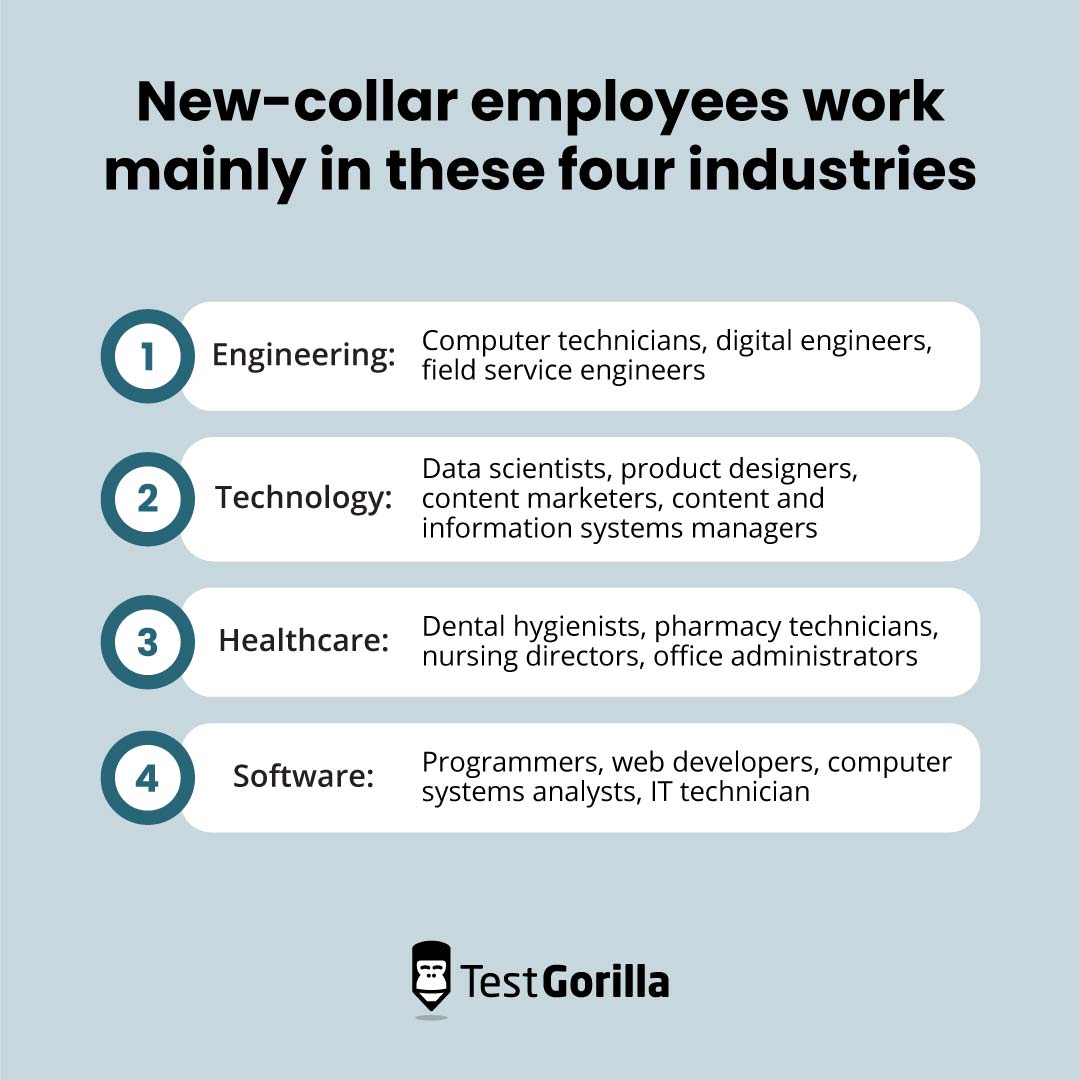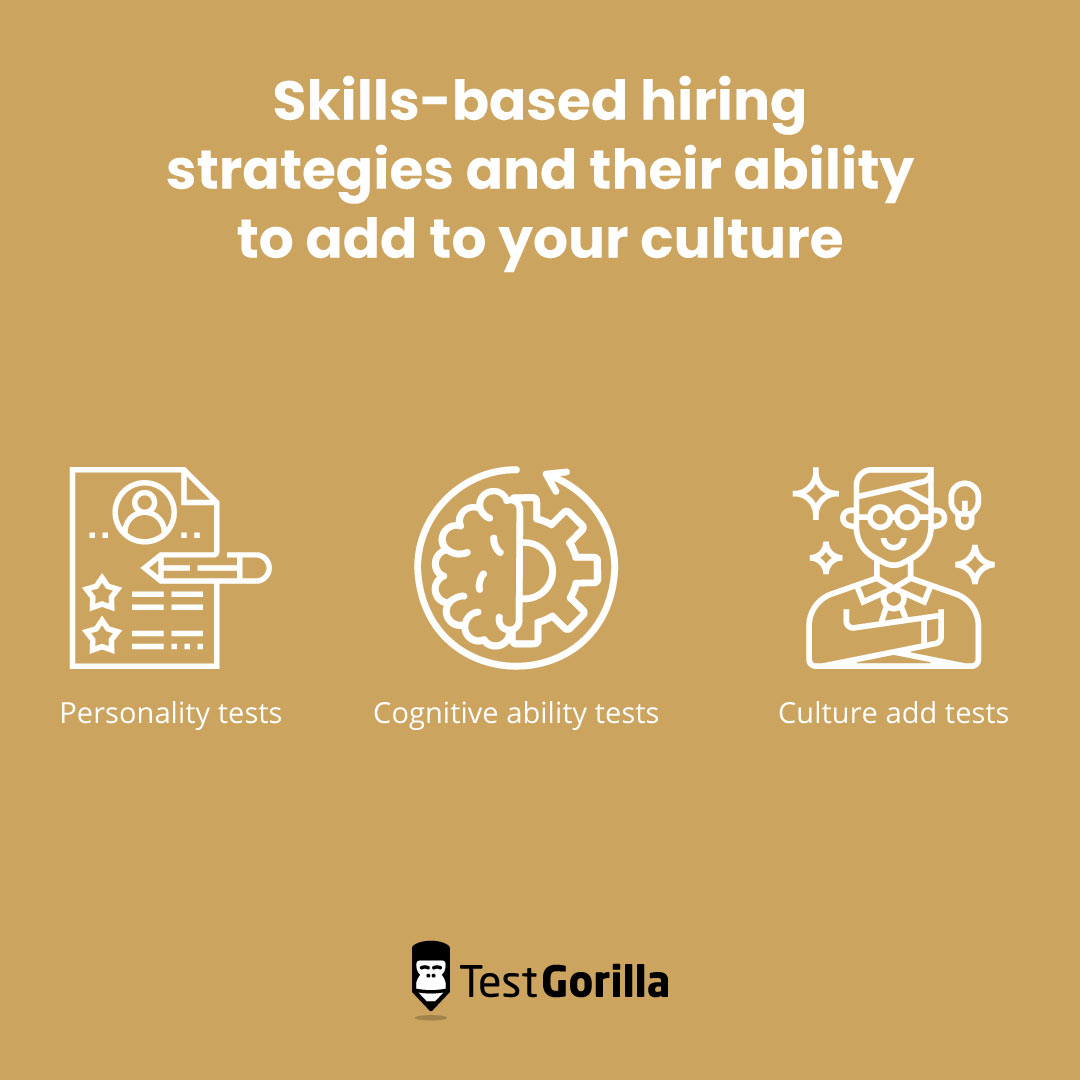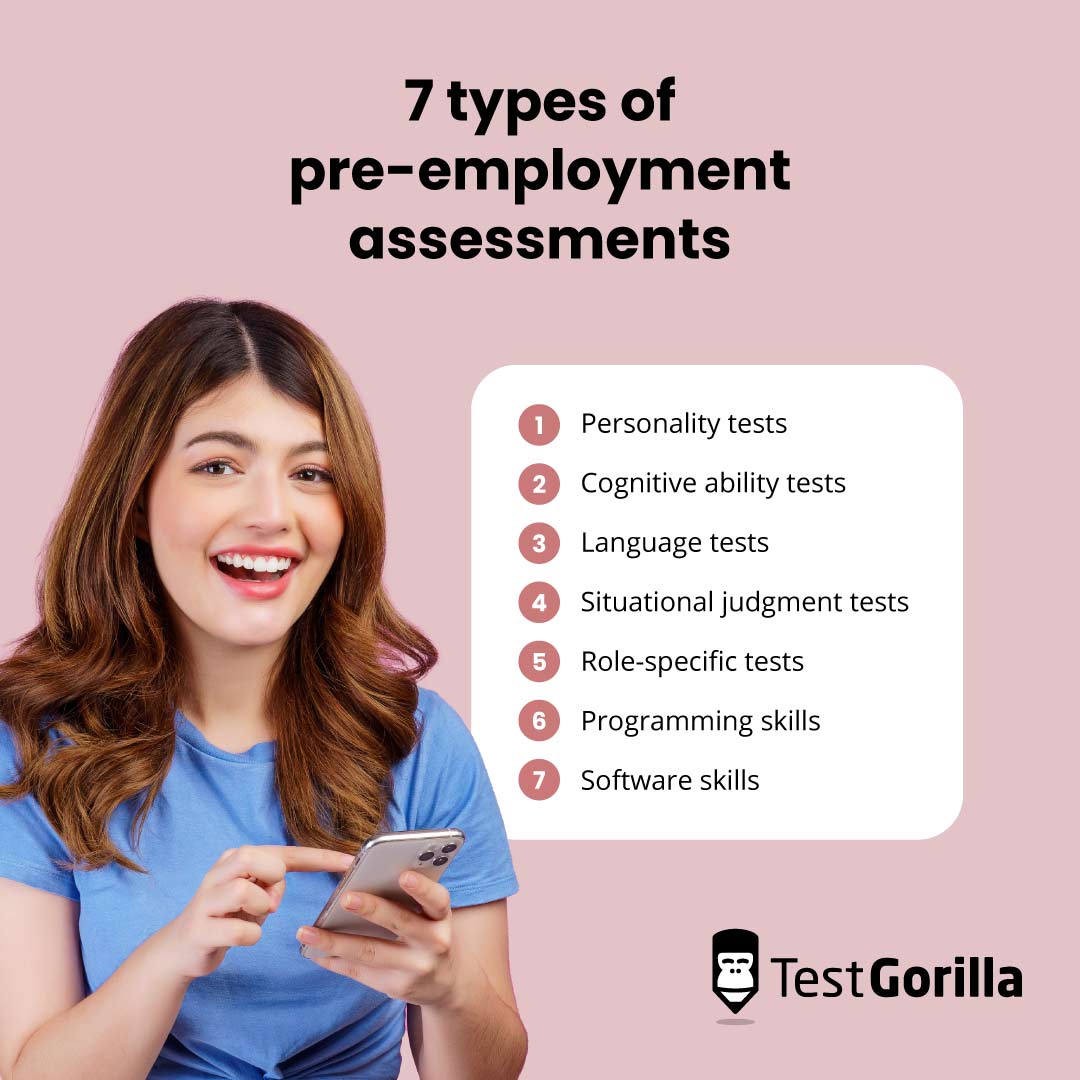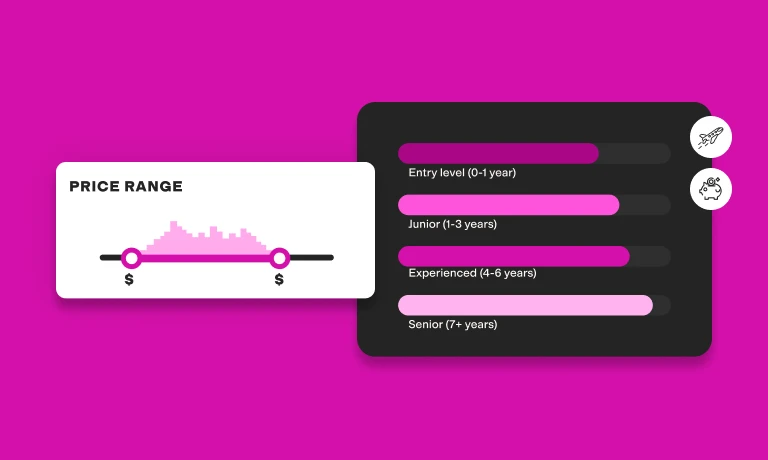During the COVID-19 pandemic, blue-collar and nontraditional workers learned a variety of in-demand digital and technical skills without receiving a formal education. This has led to the rise of a new classification of employees, known as new-collar workers.
The dynamic skill sets that these workers possess are an invaluable asset in the modern age. But traditional hiring practices don’t take full advantage of this new skilled workforce because they rely too heavily on outdated requirements, like only hiring candidates with degrees.
On the other hand, skills-based hiring attracts and retains blue-collar, white-collar, and new-collar workers to grow organizations and develop individual careers.
This strategy focuses on what candidates are capable of now and what they will be capable of years from now.
That’s one of the reasons why skills-based hiring is the future of employment.
It’s a data-backed, multi-measure assessment process that fits like a glove with the new-collar job market because candidates can show their skills instead of their education history.
This article looks at what new-collar jobs are, how they got here, and the best practices to follow when hiring new-collar workers.
Table of contents
- What are new-collar jobs?
- Why is skills-based hiring the right choice for new-collar jobs?
- New-collar skills and how to test for them
- The best practices for filling new-collar roles with skills-based hiring
- Skills-based hiring expands your talent pool for new-collar positions
- Use skills-based hiring to keep up with the new-collar workforce
- Sources
What are new-collar jobs?
New-collar jobs are skilled roles, typically in the digital and tech space, that don’t require traditional education paths like four-year college degree programs.
New-collar employees have developed their knowledge, experience, and technical and soft skills through nontraditional paths like:
Certificate programs
Software and coding boot camps
Trade schools
Community college programs
But these paths are not the only way to become a new-collar worker. They can also be self-taught.
New-collar employees work mainly in these four industries:
New-collar industries | Examples of roles |
Engineering | Computer technicians, digital engineers, field service engineers |
Technology | Data scientists, product designers, content marketers, content and information systems managers |
Healthcare | Dental hygienists, pharmacy technicians, nursing directors, office administrators |
Software | Programmers, web developers, computer systems analysts, IT technician |
Although most new-collar jobs are in the digital technology space, companies outside of these industries have been hiring new-collar workers, too.[1]
Penguin Random House, for example, eliminated degree requirements for open roles like marketing designers, publicity assistants, and senior finance managers.
Hilton did the same for event and front office manager positions.
That being said, tech jobs without a degree are the bread and butter of new-collar jobs.
Joanna Estanislao, for example, has a strong background in hospitality and the service industry. During the COVID-19 pandemic, she was furloughed by her employer and decided to make a career switch.
She didn’t have a degree or previous work experience, but she did have transferable skills in sales that caught the eye of Okta, an identity and access management company.
In fact, Okta implemented a business development associate program in 2021 to hire new-collar workers based on skills instead of degrees. Joanna participated in this program and is now a full-time new-collar sales worker at the tech organization.
Other software and tech companies like Okta are investing in candidates that have these transferable skills with training and upskilling programs.
IBM’s New Collar Certificates program, for example, offers skills and job training modules and paid internships. It’s also a call to action for global policymakers to expand career-oriented funding for an ever-expanding new-collar workforce.
What’s causing the rise in new-collar jobs?
The rapid acceleration of digital technology and the talent shortage in tech fields – caused by the Great Resignation and the COVID-19 Pandemic – are primarily responsible for the rise in new-collar roles.
With a large swath of workers unable to earn income and with plenty of time on their hands, they seized the opportunity to learn in-demand skills to secure higher-paying jobs.
More than a tenth of US manufacturing, warehouse, and hospitality workers switched to new-collar jobs between 2020 and 2022.
Although the most significant shifts from blue- and white-collar jobs to new-collar ones have been seen since 2020, IBM chairwoman, president, and chief executive officer, Ginni Rometty, coined the term in 2017 at the World Economic Forum.
Her central premise was that there won’t be white-collar or blue-collar jobs in the future, only new-collar ones.
Whether or not those traditional-collar jobs disappear is up for debate, but the fact remains that new-collar roles are soaring in popularity.
Why is skills-based hiring the right choice for new-collar jobs?
Skills-based hiring’s emphasis on skills over degrees makes it the perfect hiring strategy for new-collar openings.
This data-driven approach uses multi-measure testing, structured interviews, and role-specific tests to identify which candidates can actually do the job.
Skills-based hiring is practical, sustainable, and financially viable across the board for new-collar jobs because it helps employers identify, assess, and retain skilled candidates quicker and cheaper than traditional hiring.
Skills-based hiring reduces the effects of unconscious bias
Traditional hiring practices ignore new-collar candidates who have developed desperately-needed skills simply because they don’t have degrees. STARs, or people who have been “Skilled Through Alternative Routes,” can also fall under this category.
Such hiring practices also miss out on blue-collar workers with transferable skills, excluding them simply because they lack formal education and work experience.
Skills-based hiring sidesteps these limitations, reduces degree inflation, and opens up the talent pool to overcome unconscious bias.
And unconscious bias is indeed a real problem in the workplace landscape.
Limiting your talent pool to only those who have graduated college is an unconscious form of racial and class bias because nearly 60% of college graduates are White or Caucasian.
This means you’re missing out on top-tier talent who happen to have different lived experiences and resources.
New-collar workers, on the other hand, come from many different backgrounds and are able to prove their skills instead of simply relying on their educational background, which research has proven not to predict job success.[2]
Skills-based hiring emphasizes learning and development
Skills-based hiring also emphasizes learning and development opportunities as a tool to attract new-collar talent and leverage their growth potential to continuously grow your organization.
Nearly three-quarters of candidates want opportunities to show their knowledge, experience, and skills during the hiring process.[3]
With skills assessments, new-collar candidates can show the skills they have learned instead of having to justify how they learned them on a resume.
Although skills-based hiring is the perfect hiring strategy for most new-collar jobs, it’s up to you as the employer to decide if it’s right for your particular organization.
A field service engineer, for example, is a new-collar role that requires travel to different job sites to perform installations, assemble hardware, and troubleshoot issues in person.
The hiring manager for this role should weigh the benefits of remote, multi-measure skills assessments over an in-person interview to see if skills-based hiring is right for this new-collar job.
The best insights on HR and recruitment, delivered to your inbox.
Biweekly updates. No spam. Unsubscribe any time.
New-collar skills and how to test for them
New-collar jobs typically require a blend of certain technical skills, like digital skills, and soft skills, like communication, problem-solving, numerical reasoning, critical thinking skills, and creativity.
Skills-based hiring offers a wide range of tools to assess a candidate’s competency in each of these skill areas.
Let’s say you’re building an app, and you need a new UX/UI designer. You need someone with the technical skills to wireframe, prototype, and conduct research. You also need them to be creative and a visual thinker.
Skills-based hiring implements assessments to pinpoint role-specific abilities to fill your vacancies.
Our UX/UI Design test, for example, evaluates candidates’:
Knowledge of the overall UX/UI process
Technical skills like wireframing and UI design
Ability to turn required features into useful designs
Ability to prototype and test design
Skills-based hiring strategies also offer the tools needed to assess candidates on mental attributes, cognitive ability, and their ability to add to your culture.
Personality tests assess your new-collar candidates’ personality traits, characteristics, and behavior to see if they will mesh well with your existing team.
Cognitive ability tests measure candidates’ mental skills like attention to detail, problem solving, critical thinking, numerical reasoning, reading comprehension, and spatial reasoning.
Culture add tests measure your new-collar candidates’ values and behaviors to see how well they align with your organization’s values and their potential to expand your existing culture.
Keep in mind using the results of only one assessment to make your hiring decision is not a good strategy because it gives you a limited understanding of your applicants.
The best practices for filling new-collar roles with skills-based hiring
Using skills-based hiring seems like an easy fit with new-collar jobs, and it is - if you’re following best practices.
It’s important to remember that skills-based hiring is a toolbox, not a single tool.
Hiring for skills is built upon the foundation of multi-measure testing – using a variety of assessments, skills tests, and structured interviews to get a complete picture of the candidate you might hire.
It’s a holistic hiring process that approaches each candidate as a unique human being with a diverse background, skill set, and potential.
As the employer or hiring manager, you must first understand the skills that your organization has, needs more of, or has yet to take advantage of before initiating your hiring process. There are several paths you can take and combinations that you can try to get a great hire.
Just remember: Never rely on a single assessment to decide who to hire.
With that in mind, let’s take a look at some best practices to follow for filling new-collar roles, whether you’re hiring a software programmer or a director of nursing.
Step 1: Determine the skills needed for the particular role
The first step is less about defining what the job is and more about what skills that job requires.
In fact, the traditional understanding of a job as a set of responsibilities contained under a singular job title is a holdover from traditional hiring that is already beginning to fade. A new survey from Deloitte shows that only 19% of executives and 23% of workers believe that jobs provide the best structure for work.
Your first step is to identify the skill gaps in your organization and look at the ideal hire as someone who has the skills to fill those gaps.
In other words, conduct a skills-gap analysis.
After your skills-gap analysis, let's say you need a specific kind of designer. Someone with experience working in architecture and urban planning who also has the digital skills to translate strategies for design building into computational scripts.
Instead of scrambling to interview candidates with four-year architecture degrees, your skills-gap analysis is pointing to a more nuanced, new-collar position: a computational designer.
Sure, the ideal candidate may have a degree in a relevant field, but they also may have learned these skills online or through an apprenticeship program.
The key is to cater your hiring process to attract and retain the best possible candidate for the job, no matter how they learned their skills.
Step 2: Write skills-based job descriptions
Research shows that 50% of candidates are hired internally, but after reviewing your skills-gap analysis results, you realize you need someone new.[4]
Keep in mind that 74% of new-collar workers were pre-pandemic blue-collar workers who used the COVID-19 pandemic to learn new skills to get better jobs.
Many new-collar workers used to clock long hours in person, putting themselves and their families at risk, while white-collar workers transitioned to flexible remote-working opportunities, with their salaries and jobs protected.
New-collar workers want these same basic opportunities and typically have the skills and motivation to demand them.
Fair pay, reasonable hours, and work flexibility should all be advertised on your job postings to attract talented new-collar workers.
Now that you have determined the skills you need for your organization, it’s time to craft a skills-based job description that:
Emphasizes responsibilities over role
Offers competitive compensation
Lists all relevant skills needed
Offers remote work (if possible)
Shows candidates why they should apply
Treats the candidate like a human being
Welcomes diverse candidates
Candidates want to know what the job truly entails and what working for your organization will be like.
Communicating these points to your new-collar workforce is a great tool to attract talent.
Step 3: Screen candidates with skills assessments
The sooner you test for skills, the better.
Remember the toolbox? This is where multi-measure testing comes in.
Here are the 7 types of pre-employment assessments, some of which we covered earlier:
Personality tests
Cognitive ability tests
Language tests
Situational judgment tests
Role-specific tests
Programming skills
Software skills
Since personality tests focus more on a candidate’s personality type, they should never be used as the determining factor in hiring.
In fact, the US Department of Labor’s Testing and Assessment guide explains that only using personality tests can lead to unconscious bias and discrimination.[5]
Let’s say you’re hiring a new-collar cyber security analyst. Your candidate doesn’t have a degree in cybersecurity, but the good news is they don’t need one.
There are reputable cybersecurity certificate programs, like CompTIA Security+, that train new-collar workers on role-specific tasks and concepts.
Start with a hard skills test, like our Cybersecurity Skills test, to evaluate the candidate’s:
Technical skills related to cybersecurity
Competencies in key fields like endpoint, network, and web security
Understanding of exploiting and mitigating threats in these areas
Narrow down your applicant pool to those who not only have the right technical skills but can apply them to situations they will encounter when working at your organization.
Try one of our situational judgment tests, for example, and place your candidates in hypothetical, work-related scenarios to evaluate planning skills, attitude, stress management, collaborative skills, and persuasion.
Personality tests are the cherry on top of your multi-measure testing process, confirming whether a candidate’s personality type and values can benefit your organization.
Step 4: Give candidates a paid trial assignment
There’s a difference between testing a candidate’s knowledge about relevant skills or fields related to your job opening and actually proving they can do the work.
Offering your new-collar candidates a paid trial assignment is a skills-based hiring tool that does the following:
Gives a practical demonstration of the candidate’s role-specific abilities
Asking a candidate how they would do the job can give you insight into how they plan and approach work-related tasks, but a paid trial assignment shows if their skills match their mindset.
Proves the candidate can accomplish tasks in an allotted time
Your new-collar worker may have learned many of the relevant skills to succeed at your organization. But paid trial assignments also assess whether they can get the job done on the clock.
Shows candidates what to expect from the job
Candidates want to know what the job entails when they are going through the hiring process. Paid trial assignments give your new-collar applicants a taste of what they can expect if they are ultimately hired.
Lets candidates know that you’re invested in the hiring process
If you pay candidates to show their skills on a trial assignment, you are communicating that you value their time and their effort, even before they are an official employee.
Compare results to other candidates with the same trial to find a standout
Give all of your candidates the same trial assignment and determine which candidate has performed the best. You can store these results for future hiring efforts to keep your process efficient and accurate.
What does a paid trial look like?
Let’s say you’re hiring a graphic designer.
You would pay the candidate to perform tasks that they would complete on a daily basis in the role, such as designing a sales deck, a marketing email, and/or a brochure.
Step 5: Hire for culture add instead of culture fit
Diverse and inclusive organizations are 35% more likely to outperform their competitors because they decrease homogeny and groupthink and boost innovation and creativity.[6]
In other words, diverse organizations hire for culture add instead of culture fit.
New-collar workers are not a monolithic workforce with the same training and background.
They learned their skills through a variety of different paths like technical certificate programs, software boot camps, online learning platforms, and on-the-job apprenticeships. They might have even taught themselves the skills they need to perform.
Research reveals that there is a graduation gap between White college students and Black and Hispanic college students:
Black or African American students in bachelor’s programs have a five-year graduation rate of 40.5%.
Hispanic or Latino students in the same programs have a slightly higher graduation rate of 41.5%.
White or Caucasian students in these programs have a graduation rate of 62.2%.
How does this affect diversity within your organizations?
Relying solely on degrees limits your talent pool and your organization’s diversity, which threatens your business’s productivity and growth.
The OneTen organization, for example, acknowledges this opportunity gap for Black new-collar workers by making it their mission to enable the hiring of one million Black new-collar workers into well-paying careers over the next ten years.
Although there is not widespread demographic data on the ethnic and social makeup of the new-collar workforce, skills-based hiring helps you locate, hire, and develop new-collar workers for all backgrounds to boost innovation and advance your business goals.
Step 6: Use structured interviews
You may not feel that a face-to-face interview is necessary for the role you are hiring for.
But if you do elect to interview your applicants, make sure you run structured interviews.
Structured interviews are especially valuable to new-collar job candidates because none of the questions ask about formal education history, and none of the candidates have it to begin with.
Structured interviews differ from unstructured interviews because they focus on questions related to skills, behavior, attitude, and motivation – or in other words, the candidate’s attributes that are directly related to the position.
Unstructured interviews introduce bias into your hiring process because questions can be more free-flowing and subjective.
Unstructured interviews also take longer to complete and are harder to assess because the interviewer does not ask every candidate the same questions in the same order.
There are two types of structured interviews – structured behavioral and structured situational:
1. Structured behavioral interview
These interviews typically focus on learning about your candidate’s past experiences by asking for examples related to their behavior, competencies, and skills in certain contexts.
For example, if you are assessing your new-collar candidate’s communication skills, you can ask: How do you present critical new information to a group of colleagues?
Ideally, the candidate’s response reveals the process they have cultivated based on prior experiences.
2. Structured situational interview
These are similar to behavioral interviews, but they ask more hypothetical or situational questions to determine how a candidate would handle a role-specific situation.
A good situational interview question to ask is: What would you do if an angry customer confronted you?
A skilled candidate would explain how to diffuse the situation and offer ways to resolve the situation.
Step 7: Communicate upskilling and reskilling opportunities
Upskilling means putting your employees in situations where they can improve their existing skills to benefit their individual careers and your organization.
Reskilling develops entirely new skills so your employee can move to a different role within your organization or prepare to switch careers.
Why does this matter to new-collar workers?
Many talented new-collar workers are proactive when it comes to learning new skills and want to improve existing ones.
This is impressive when you consider that they did not have the benefit of a traditional four-year degree program to direct and monitor their skills development.
But growing numbers of college-aged people are questioning whether college is all that beneficial in the first place.
Research from a 2022 study shows that enrollment is declining in education.[7] Respondents to a survey said they did not want to enroll because of:
The fear of getting saddled with debt (38%)
The stress associated with college life (27%)
The belief that work and earning money is more important (26%)
Uncertainty about their career trajectories and majors (25%)
Whether or not higher education warrants these concerns is debatable. What’s not debatable is that with more students opting out, more new-collar workers want jobs that can offer them training.
In fact, that same survey found that 70% of student respondents agreed that on-the-job training was the best way to advance a career.
Upskilling and reskilling are crucial tools to meet this demand. But it’s not enough to offer these opportunities once you hire employees.
You should communicate these opportunities on your job postings and make them a central part of the dialogue you have with new-collar candidates.
Remember: Upskilling and reskilling aren’t perks; they are staples of skills-based organizations.
Skills-based hiring expands your talent pool for new-collar positions
In the US, slightly less than 40% of people aged 25 or older have earned at least a bachelor’s degree.
Limiting your talent pool to candidates with these types of degrees decreases your recruiting choices by more than 60%.
It also prevents blue-collar workers and STARs from using their transferable skills to benefit your organization.
With 50% of the workforce planning to switch careers in the UK alone, skills-based hiring gives new-collar workers an opportunity to show their transferable blend of technical and soft skills, like digital skills, creativity, and leadership.[8]
Companies like IBM, Accenture, Bank of America, Okta, and Dell are tapping into the 70 million STARs and new-collar workers across the US.
Since Accenture launched its apprenticeship program in 2016, 80% of its new hires do not have college degrees.[9]
Accenture wants to take this a step further by expanding its apprenticeships to fill 20% of its US entry-level roles, like cybersecurity, cloud, and platform engineering.
In 2018, Bank of America eliminated degree requirements for entry-level positions. It launched a pathways program to hire new-collar candidates from lower-income areas for jobs in operations, sales, and software development.[10]
In 2021, they announced they exceeded their five-year goal to hire 10,000 new employees from these areas and are now expanding the program across the company.
With research showing that three in four workers do not have the digital skills that businesses say they need, skills-based hiring helps companies expand their talent pool to locate nontraditional, new-collar workers that can fill the gap.[11]
Use skills-based hiring to keep up with the new-collar workforce
New-collar jobs won’t be new for much longer.
With the rapid expansion of digital technology, shrinking enrollment rates, and the rise of skills-based organizations, you need a hiring process that can keep up.
Skills-based hiring helps you attract and retain talent regardless of their educational background.
How? By following best practices like identifying skills gaps, making skilled-based job descriptions, using multi-measure assessments, and offering employee development opportunities.
But skills-based hiring isn’t a one-trick pony. It can help you fill white and blue-collar jobs too.
Learn more about the benefits of skills-based hiring for white-collar jobs and the best way to attract and retain blue-collar workers.
Sources
Connley, Courtney. (2018). “Google, Apple, and 12 other companies that no longer require employees to have a college degree”. CNBC.com. Retrieved June 20, 2023. https://www.cnbc.com/2018/08/16/15-companies-that-no-longer-require-employees-to-have-a-college-degree.html
Schmidt, Frank, et al. (1980). “Validity generalization results for tests used to predict job proficiency and training success in clerical occupations”. American Psychological Association. Retrieved June 20, 2023. https://psycnet.apa.org/record/1980-31533-001
Raposo, Devin. (October 21, 2021). “9 Telling Candidate Experience Statistics That Can Help Refine Your Hiring Process”. Linkedin. Retrieved June 20, 2023. https://www.linkedin.com/business/talent/blog/talent-acquisition/stats-key-to-providing-great-candidate-experience
“Internal Candidates - The Real Competition”. CareerProfiles. Retrieved June 20, 2023. https://www.careerprofiles.info/the-real-competition.html
“Testing and Assessment: A Guide to Good Practices For Workforce Investment”. (2006). US Department of Labor Employment and Training Administration. Retrieved June 20, 2023. https://www.onetcenter.org/dl_files/proTestAsse.pdf
Hunt, Vivian, et al. (January 1, 2015). “Why diversity matters”. McKinsey & Company. Retrieved June 20, 2023. https://www.mckinsey.com/capabilities/people-and-organizational-performance/our-insights/why-diversity-matters
“Where Are the Students?”. (September 28, 2022). Gates Foundation. Retrieved June 20, 2023. https://usprogram.gatesfoundation.org/news-and-insights/articles/gates-foundation-probes-college-enrollment-decline
Radonjic, Jelena. (October 1, 2020). “Has The Future Of Work Arrived?”. Forbes. Retrieved June 20, 2023. https://www.forbes.com/sites/forbescoachescouncil/2020/10/01/has-the-future-of-work-arrived/
Caminiti, Susan. (April 25, 2022). “No college degree? No problem. More companies are eliminating requirements to attract the workers they need”. CNBC. Retrieved June 20, 2023. https://www.cnbc.com/2022/04/25/companies-eliminate-college-degree-requirement-to-draw-needed-workers.html
“Bank of America Exceeds Five-Year Goal to Hire 10,000 From Low - and Moderate-Income Communities”. (September 30, 2021). Bank of America. Retrieved June 20, 2023. https://newsroom.bankofamerica.com/content/newsroom/press-releases/2021/09/bank-of-america-exceeds-five-year-goal-to-hire-10-000-individual.html
“Salesforce Launches Global Digital Skills Index: In-Depth Insights from 23,000 Workers”. (January 27, 2022). SalesForce. Retrieved June 20, 2023. https://www.salesforce.com/news/stories/salesforce-digital-skills-index-details-major-gaps-across-19-countries/
You've scrolled this far
Why not try TestGorilla for free, and see what happens when you put skills first.





















